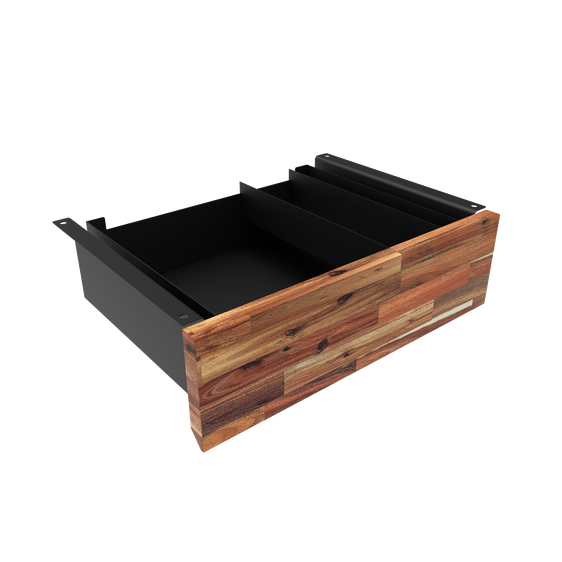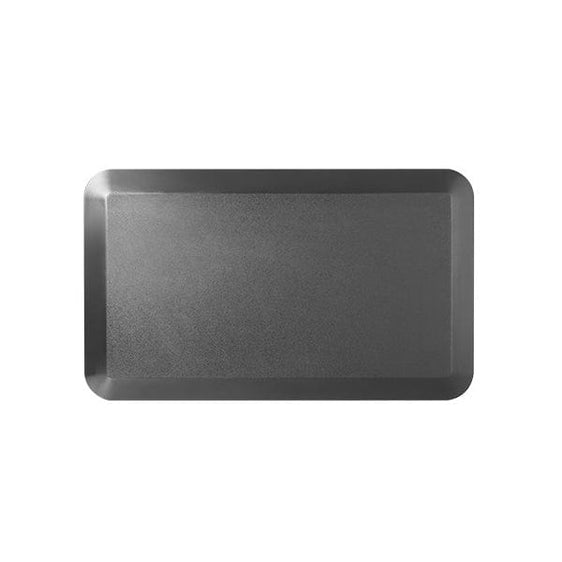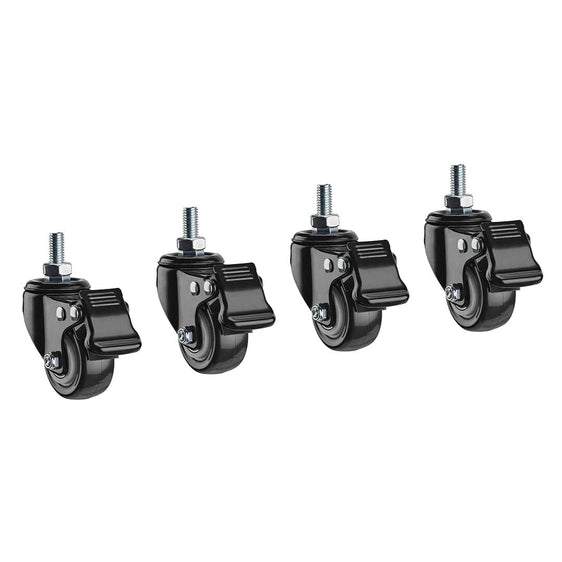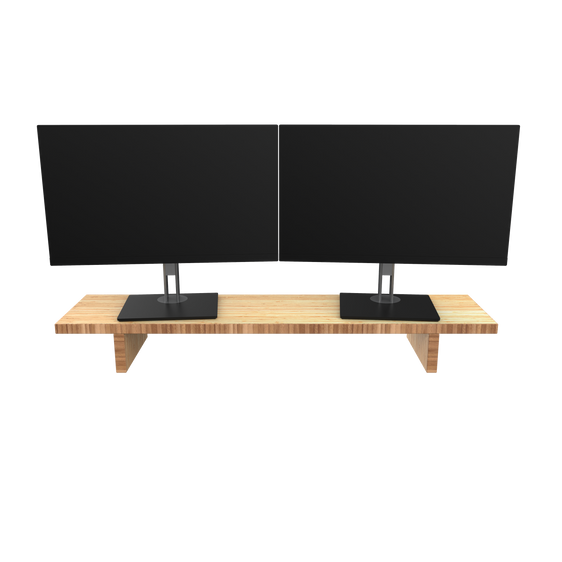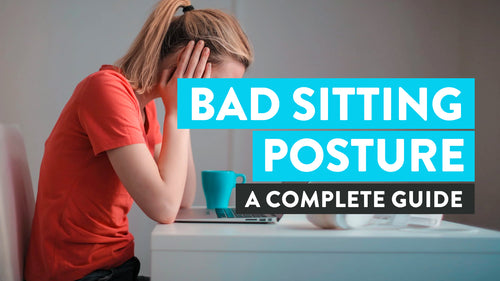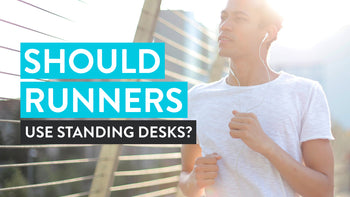
News
Should Runners Use Standing Desks?
Hayden AdamsMost people know the risks of sedentary lifestyles, and the truth is most people live sedentary lifestyles. To combat the health risks associated with sitting too much, individuals have suggested utilizing standing desks for working professionals. Some people are confident that standing rather than sitting prevents detrimental health issues from occurring due to insufficient physical activity.
But how about sit stand desks for runners? We all know the dangers of sitting too much. According to an Academic Medical Journal, a third of the global population over the age of 15 does not engage in a healthy amount of physical activity. Worse yet, sedentary lifestyles are related to higher rates of mortality, heart issues, and other metabolic diseases. Still, runners do a fair bit of regular exercise - does that mean they're exempt from sitting disease? The truth is that everyone, including runners, can benefit from periods of both sitting and standing at a height adjustable desk during their work day.
If you're a runner who's health conscious and interested in ways you can reduce the harmful effects of sedentary lifestyles, check out the following expert guide on standing desks. We answer major questions concerning standing desks and the possible benefits runners may derive from using them.

Can Exercise And Running Counteract Sitting Damage?
If you are a runner, you may think you are exempt from the dangers of a sedentary lifestyle. Despite your high rates of physical activity, the risks of remaining still for prolonged periods still affect you!
According to a systematic medical review, long periods of inactivity create health problems that long periods of high activity probably do not counteract. Most medical researchers claim that this area requires more study.
However, plenty of research shows the health benefits of exercising. For example, according to one study, running reduces the risk of developing hypertension or diabetes and helps regulate cholesterol. Another study found that physical activity may act as one of the primary preventers of some cancers, diabetes, and osteoporosis.
More so, exercising improves mental health and leads to a happy and healthy lifestyle. Exercising reduces symptoms associated with stress, anxiety, and depression. Exercising has been linked to improvements in brain memory, and studies show that physical activity releases chemicals in the brain like dopamine and endorphins.
Can You Reverse Years Of Sitting?
Some studies suggest that it is never too late to start exercising to reduce the effects of years of immobility. For example, the cardiovascular health journal Circulation claims that exercise may have a dramatic, positive effect on the health of a previously sedentary middle-aged person.
Additionally, some believe that adjustable sit-stand desks play a role in reducing the harmful outcomes of years of sitting still. Some medical professionals believe that even slightly decreasing time spent sitting helps offset years of prolonged sitting.
How Much Should I Exercise To Counteract Sitting All Day?
Circulation also found that only two years of weekly aerobic exercise increases the health of those formerly desk-bound. Additionally, Baptist Health South Florida published an article detailing how much physical stimulation may offset ten or more hours of remaining sedentary.
Overall, the study concludes that sitting for 10 hours a day increases the risk of chronic disease, including high cholesterol, blood pressure, and blood sugar. Combined, these outcomes can be detrimental and link to the number 1 cause of early death in the United States, which is cardiovascular disease.
The article's findings explain that weekly 150-300 minutes of moderate-intensity or 75-150 minutes of vigorous-intensity physical activity may counter sedentary behavior. Similarly, the American Heart Association (AHA) recommends that each week, people get at least 150 minutes of moderate-intensity aerobic exercise or 75 minutes of vigorous aerobic exercise.
Benefits Of Standing Desks For Runners

Before discussing the benefits of sit-stand desks for runners, be aware of the possible hazards of either standing or sitting too much at your desk. Standing too much or too long leads to potential side effects, and some individuals report more back, leg, foot, and neck pain when using a standing desk.
Slowly convert to standing by steadily increasing the time you spend at your standing desk to prevent this issue. Do not spend significant amounts of time standing all at once.
Even more detrimental, standing too often may increase the chances of developing heart disease. Combat this by moving throughout the day and abide by the standing-sitting ratio we outline in our "Tips For Runners To Use A Sit-Stand Desk Correctly" section.
Despite these shortcomings, standing desks increase a person's metabolic rate because standing burns more calories than sitting. What's more, standing desks help runners deal with aches and pains by giving them the freedom to stretch while they're working and standing at their desk, among other overall health benefits.
Aches, Pains, and Tightness Reduction
Standing desks reduce the risk of developing hip flexor tendinitis or Iliotibial Band Syndrome, an injury affecting the knee. Both injuries are prevalent in runners due to the high impact nature of running. Distance runners are especially susceptible to Iliotibial Band Syndrome.
After we run, our hip flexors tighten. When we sit, our hip flexors also tighten. This combination increases the chances that runners will develop hip flexor tendinitis. A standing desk helps strengthen muscles and reduce tightness.
Sitting is unnatural for the entire body. Standing helps open up your body into a natural position, thus addressing overall tightness. When we sit after running, our muscles are more prone to injury.
Standing as opposed to sitting will not compress the muscles, giving them a chance to loosen rather than tighten. Standing desks allow runners to naturally incorporate stretches while working at the standing desk, which may address muscle tightness even more. Less muscle tightness means shorter recovery times and fewer aches.
Runners know that vigorous running is hard on the back and neck, and sitting for prolonged periods instigates the pain. According to Occupational and Environmental Medicine, standing reduces neck and back pain and strengthens the core. Using a standing desk helps reduce back pain naturally throughout the workday, increases recovery times, and will help you get back to running faster.
Overall Health Benefits
If you do not run as a hobby, you probably run to lose weight or maintain a healthy weight. Standing desks effortlessly help people lose weight since standing burns significantly more calories than sitting. Researchers claim that standing burns up to 170 more calories a day compared to remaining idle while sitting.
Not only do running and standing help individuals lose weight, but they also help lower blood sugar levels. For runners, this is important since high blood sugar affects how well you run by slowing muscle growth and progress.
And, whether you care about running ability or not, low blood sugar indicates a happier and healthier heart. Since standing desks force you to stand, they help prevent sugar spikes and crashes, as well, and may lower blood sugar levels, which is especially true when contrasted to sitting.
Standing rather than sitting has been linked to increasing energy and improving moods. In other words, standing desks may help individuals increase productivity, feel good about themselves and improve their well-being. Boosting one's energy and mood leads to more motivation to do enjoyable hobbies or even run.
{{ spec_dual_bamboo_desk }}Tips For Runners To Use A Standing Desk Correctly

If you run regularly and develop injuries, standing at a desk may be the opposite of what you prefer to do. On top of all the benefits of adjustable standing desks we just listed, standing may also help runners heal from injuries.
For example, common running injuries such as Iliotibial Band Syndrome arise due to weak glute muscles. The condition causes connective tissues and ligaments from the pelvis bone down to the shin bone to tighten, causing them to rub and create friction against the thigh bone.
Standing naturally treats the issue since standing strengthens glute muscles. Sitting makes your muscles stay weak and stiffen up, often making any injury worse.
For runners to reap the most benefits from a standing desk, they must know how to use it correctly! Consider the following areas before using a sit-stand desk.
Perfect the Standing-Sitting Ratio
Contrary to common knowledge, studies indicate that a combination of sitting and standing throughout the day limits health risks and optimizes the benefits of both. Together, sitting and standing may be incredibly healthy.
If your day consists of a lot of sitting time, try breaking it up by alternating between sitting and standing every half hour to hour throughout the day. Stand for a half-hour to an hour for every hour sitting. Use an alarm to remind yourself to alternate, as long as it does not impact your productivity.
Invest in Proper Shoes
Runners, athletes, and health-conscious people know the importance of comfortable shoes. Proper shoes prevent shin splints, foot pain, and aches through the leg. Physical activity, especially running, invokes high impact, and comfortable shoes absorb shock.
Standing for a long time is no easier on your body, so proper shoes are necessary. As a runner, foot pain hinders your ability to run, and you may need to take a few days off from running. Buy a standing desk floor mat if you do not own comfortable, work-appropriate shoes. A floor mat provides subtle movement while you stand, which increases comfortability in the long run.
The bottom line, wear comfortable shoes or invest in an anti-fatigue mat. This way, comfortability will not impact your work productivity, and your body will be better taken care of.
{{ spec_anti_fatigue_stool_mat }}Understand the Importance of Posture
If you sit uncomfortably at the office, you will have poor posture, especially if you must sit for an extended period. Your muscles will get tired, and you will start to slouch. If you run before you head to the office, your slouching may be worse since your muscles will already be tired. Good posture leads to core strength and better running posture.
Just like sitting in an uncomfortable chair leads to poor posture, standing at an uncomfortable standing desk will too. If your sit-stand desk causes discomfort, you are not using it correctly. The height of your standing desk and the position of your computer must align with your body to avoid bad posture.
Fortunately, almost all standing desks can be adjusted. Make sure your desk is adjusted to the height of your elbows by adjusting it until you can reach forward and your forearms are parallel to the floor. Use a monitor arm to ensure your screen is at the ideal position. Your computer screen should be around 2 feet away from your eyes. The screen should also align comfortably with your eye level at no expense to your neck.
{{ spec_single_led_arm }}To protect your back and neck from the pains of bad posture, invest in a tilting keyboard or an armrest that attaches to your standing desk. Even if you do not want to purchase standing desk add ons, always try to keep your back straight while you work. Additionally, keep your wrists straight and parallel to your desktop so they do not bend, and sit comfortably on your computer.
When it is time for you to alternate to a sitting position, make sure your chair height aligns with your body. The seat must be parallel with the back of your thighs, ensuring your feet lay flat on the floor. The desktop should be at elbow height, even while sitting. If you have an incredibly uncomfortable office chair, consider purchasing an ergonomic office chair. A new chair spares you from pain in the long run.
{{ spec_low_back_mesh }}While at your standing desk or regular desk, keep all work materials in a place easily accessible to avoid straining your back. Our handy desk drawers and filing cabinets are a great addition to your height adjustable desk - you'll have all your materials within reach.
{{ spec_under_desk_drawer }}
Are Standing Desks Beneficial For Runners?
Whether exercising reduces sedentary health issues or not, exercising is good for you. Adding standing desks into your daily equation may pose plenty of health benefits and aid in combating years of immobility. We all know that constant sitting increases heart disease and possibly leads to a reduction in life expectancy. Take a look at our article on whether standing desks are better for health to learn more.
However, too much standing harms your body as well, especially if you are a runner. Before investing in a standing desk, make sure you understand the risks and know how to properly use your sit-stand desk. When you feel ready to purchase an adjustable height desk, check out Desky's range for quality sit-stand desks. We offer a wide variety of standing desks for every individual's home or office needs.

